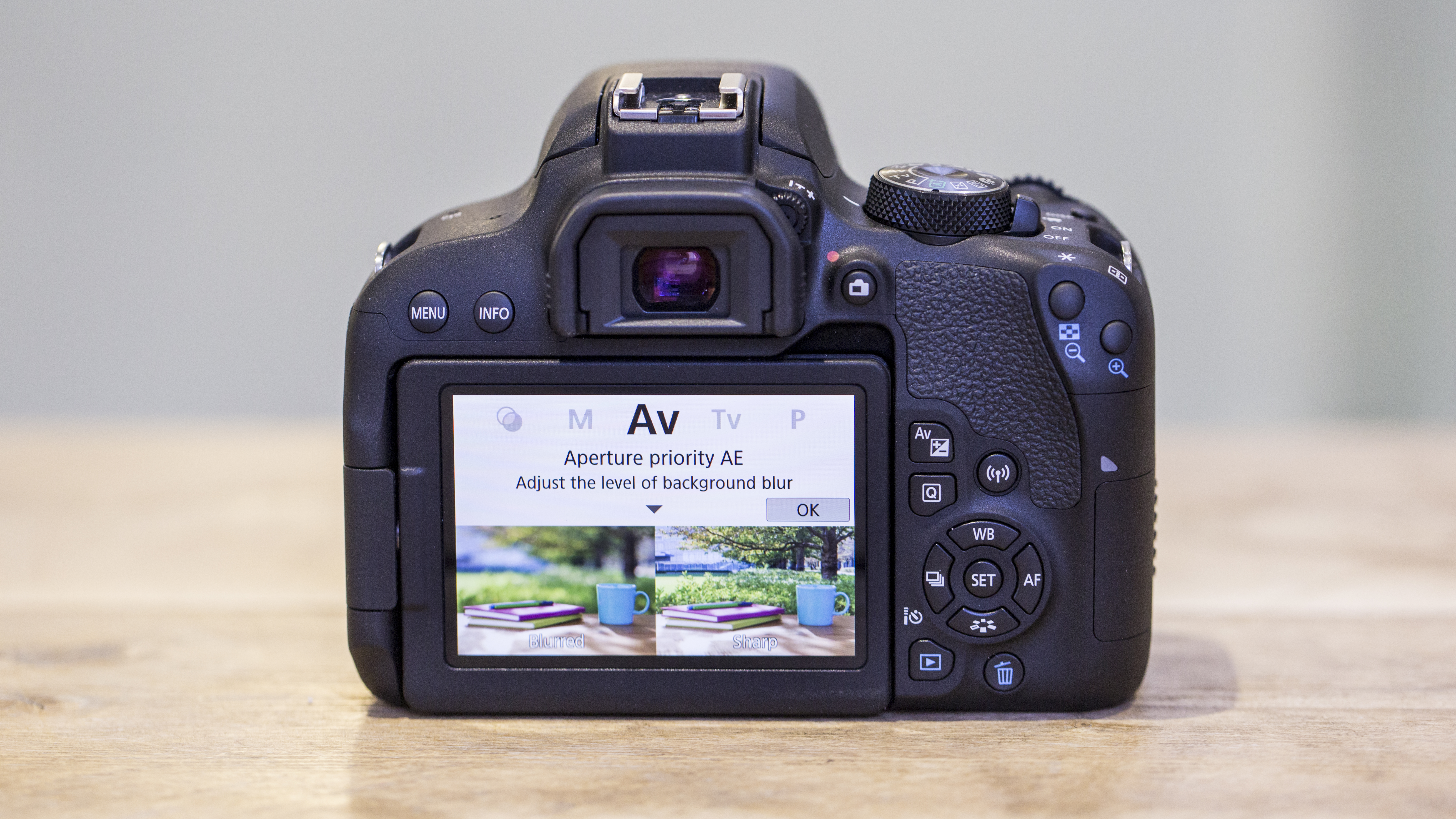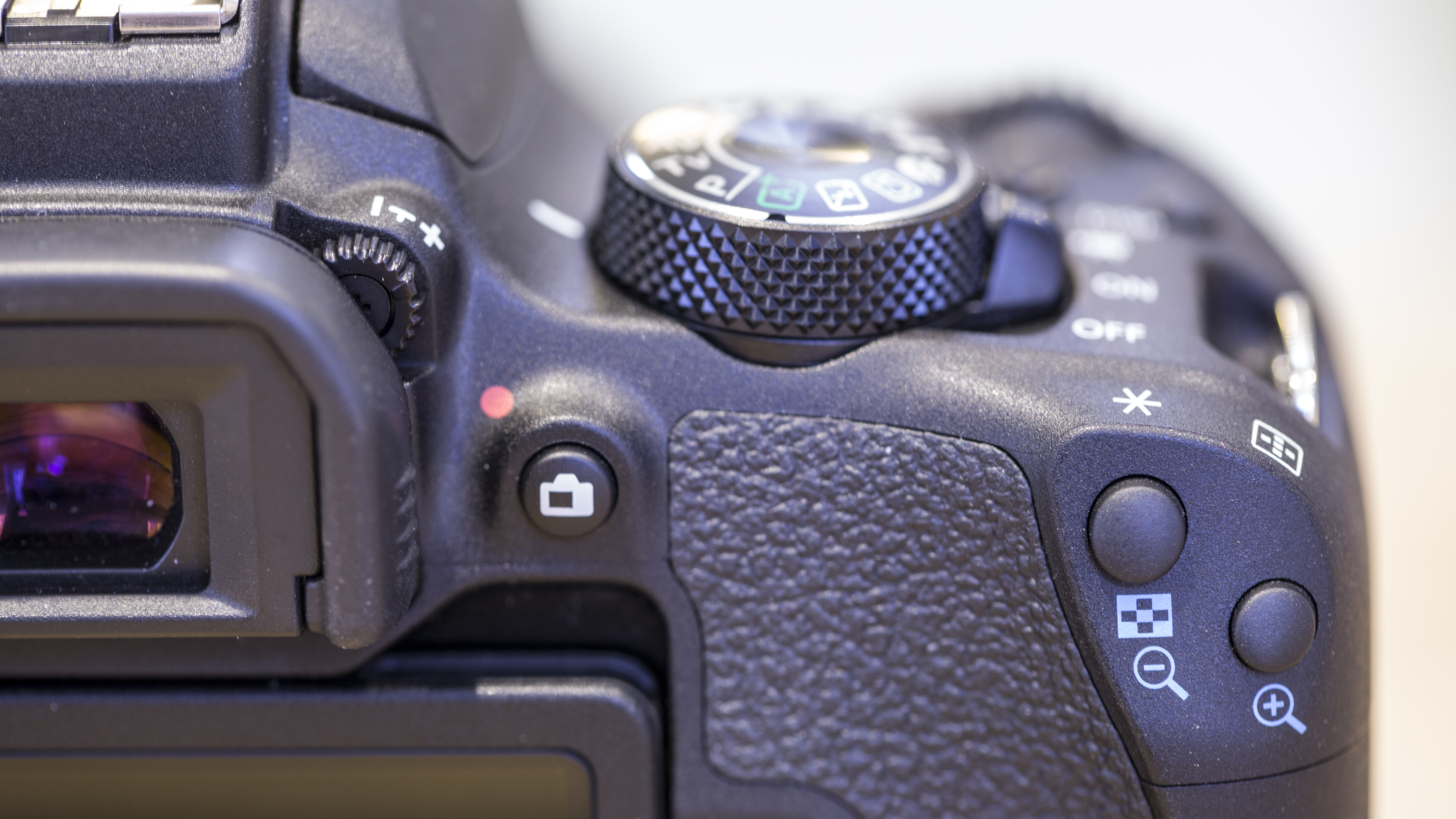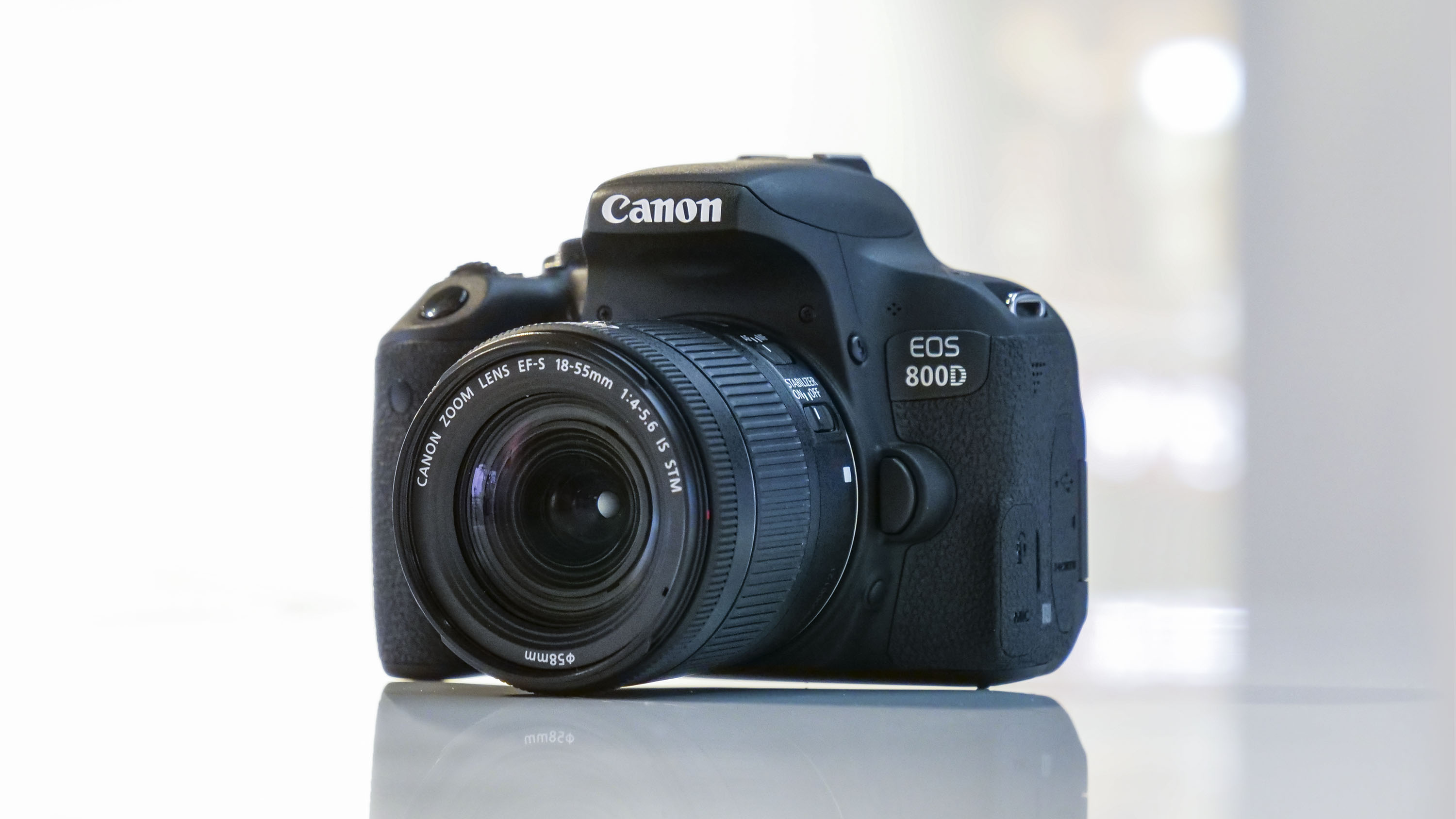Why you can trust TechRadar
Canon EOS Rebel T7i / 800D review: build and handling
- Aluminum alloy and polycarbonate construction
- Design little changed from previous models
- It feels quite cheap, especially when compared to mirrorless rivals
Like the Rebel T6i, the T7i features a aluminum alloy and polycarbonate construction, but has managed to shave about 20g from the weight of the camera, which tips the scales at 532g with a battery and card.
However, while we don’t doubt that the quality of the construction of this camera is very good, the predominantly matt plastic exterior finish of the camera just doesn’t feel that nice to the touch. If we’re being harsh, it feels quite cheap, especially when compared to recent mirrorless rivals like the Panasonic Lumix G90/G95 and Fujifilm X-T30.
While it's not going to trouble most mirrorless rivals when it comes to size, the T7i / 800D is still pretty compact, while the textured hand grip is pleasingly deep, allowing you to get a firm grasp on the camera.



Design-wise, little has changed from its predecessor, with minor tweaks to the rear of the camera. The indent to release the rear vari-angle display is now next to the viewfinder, rather than to the right-hand side, while the left-hand side of the viewfinder has a slightly gentler slope to it. Otherwise the design is almost identical, with the same control layout as the T6i / 750D. This is no bad thing though, as the T6i / 750D is a nice camera to use.
There’s a decent (but not overwhelming) amount of body-mounted controls dotted around the camera. On the top plate are a single command dial and dedicated controls for ISO, autofocus and display, while there’s a host of regularly used settings on the rear.
There’s also a Quick menu that's accessed by pressing the Q button. This gives you rapid access to some key features that can either be adjusted using the camera’s physical buttons and dials, or by touching the screen to toggle between settings.
Touchscreens are now pretty commonplace on cameras and luckily Canon was among the first to adopt them on its DSLRs. This means that even an older model like this has a very intuitive touchscreen interface that's integrated seamlessly with the camera’s menu system.
Sign up for breaking news, reviews, opinion, top tech deals, and more.
The vari-angle display offers a useful range of movement to assist in a range of shooting situations
The EOS Rebel T7i / 800D uses a cheaper pentamirror design (rather than the pentaprism that’s used in more advanced DSLRs) that shows approximately 95% of the scene as on the Nikon D5600. The display is nice and bright (if a little cramped), but you'll need to take care when composing shots to avoid unwanted elements encroaching on the edges of the frame – we found on a couple of occasions when reviewing shots on the rear display that annoying stray elements had crept in.
If you're going to be relying on the rear touchscreen more when composing shots, the good news is that you get 100% coverage here. Clarity and sharpness are good, while the vari-angle display offers a useful range of movement to assist in a range of shooting situations.
Canon EOS Rebel T7i / 800D review: autofocus
- 45-point AF, all cross-type
- Focusing is sensitive down to -3EV
- Dual Pixel AF for Live View works brilliantly
The EOS Rebel T6i / EOS 750D employed Canon's tried and tested 19-point phase-detect AF system, which was starting to look a little dated even when it was launched in 2015. Canon overhauled this for the Rebel T7i / 800D, upping the coverage to 45 points, all of which were cross-type for more accurate AF.
While that doesn't quite match up to the Canon EOS M50's 143-point AF system, the fact that they're all cross-type points is a bonus compared to older models. Cross-type sensors are sensitive in both the horizontal and vertical planes, so when the camera's focusing it's more likely to lock onto its target than a sensor that's sensitive to one plane, which can mean you have to rotate the camera to achieve focus.
As well as this, focusing is sensitive down to -3EV, so even in poor light you shouldn't have any issues. We tested the AF under poor artificial light and it performed well, only struggling when presented with some almost pitch-black conditions. Finally, 27 of the AF points are sensitive even at wider apertures down to f/8 – perfect if you're planning to use a moderately slow lens and teleconverter together.
The T7i / 800D’s phase-detect system works very well – focusing speed was pretty snappy even with the 18-55mm lens we used, while subject-tracking performance is strong, thanks to the 7560-pixel RGB+IR metering sensor that helps the AF system track subjects.
As there’s no dedicated joystick for AF point selection, this is done via the four-way button arrangement on the rear of the camera, which works pretty quickly, while there are four AF modes to choose from: selectable single point, Zone AF (uses 9 AF points in a selectable block), Large Zone AF (can select the central 15 AF points, or the 15 points either side) or Auto Selection AF (uses the entire coverage, with the camera selecting the AF points).
The Rebel T7i / 800D also gets Canon's Dual Pixel AF for Live View photography and video capture. It's certainly a welcome improvement over Canon's rather clunky Hybrid CMOS AF III system, which was used in the older model and wasn’t a patch on its mirrorless rivals for speed and operability.
With 49 AF points arranged in a 7 x 7 grid, this new system is much improved and delivers smooth and fast focusing, especially when used in tandem with the touchscreen when selecting your desired point of focus. It’s so much better than the older system, and better than the system used by the Nikon D5600 – and good enough to trouble some mirrorless systems.
Current page: Build, handling and AF
Prev Page Introduction and key features Next Page Performance and image quality
Phil Hall is an experienced writer and editor having worked on some of the largest photography magazines in the UK, and now edit the photography channel of TechRadar, the UK's biggest tech website and one of the largest in the world. He has also worked on numerous commercial projects, including working with manufacturers like Nikon and Fujifilm on bespoke printed and online camera guides, as well as writing technique blogs and copy for the John Lewis Technology guide.


